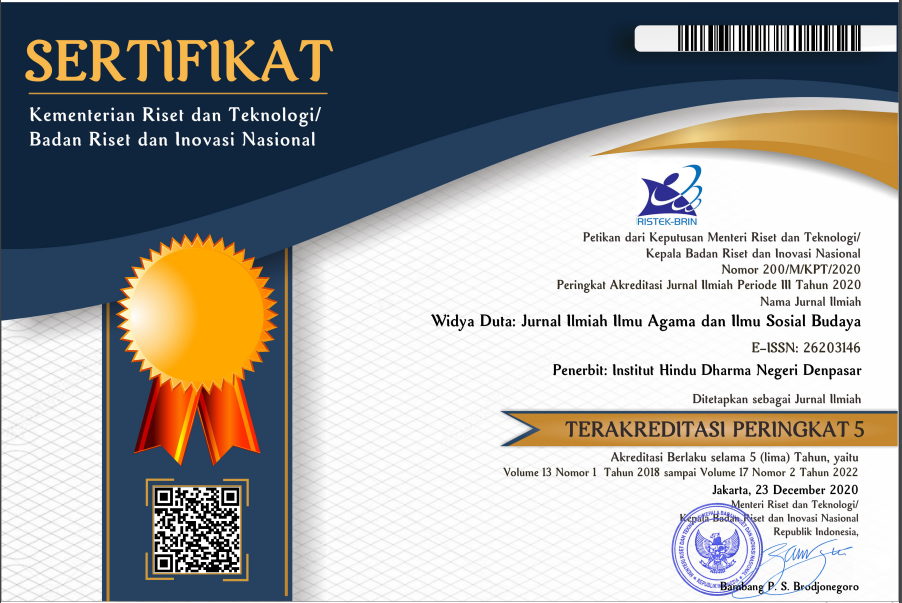NGIDER NINI TRADITION IN THE PIODALAN CEREMONY AT SIMPANG TEMPLE, DESA PAKRAMAN PILING, PENEBEL DISTRICT, TABANAN REGENCY
DOI:
https://doi.org/10.25078/wd.v17i2.1858Keywords:
tradition, ngider nini, piodalan ceremonyAbstract
Bali is a small island in Indonesia that is famous for its beautiful nature and cultural richness which is still strongly attached to the locals, therefore Bali is also known as the Island of the Gods or the Island of a Thousand Temples. In Tabanan Regency, there are several Subak Temples as a place for worshiping Dewi Sri. This is inseparable from the nickname of Tabanan city as the city of rice granaries and Dewi Sri symbolize as a giver of welfare. Among the existing Subak Temples, the author is interested in investigating one of the Subak Temples in Tabanan Regency, precisely in Desa Pakraman Piling, Penebel District, which is called Simpang Temple. This temple is carried out by the entire community of Desa Pakraman Piling. Piodalan ceremony occurs once every six months after the harvest arrives. At the piodalan in this temple, there is a unique tradition called the ngider nini. Ngider nini has become a tradition in Pakraman Piling Village, but it is not clearly understood yet about the basis of implementation and the Procession of this ngider nini, so that different interpretations of the ngider nini tradition arise because it is still based on the gugon tuwon tradition.
Based on the background of the problem, Ngider Nini tradition deserves to be investigated in a scientific paper with the title "Ngider Nini Tradition in the Piodalan Ceremony at Simpang Temple, Desa Pakraman Piling, Penebel District, Tabanan Regency". The purpose of this study is to obtain a clear understanding of the basis and procession of the Ngider Nini tradition.





